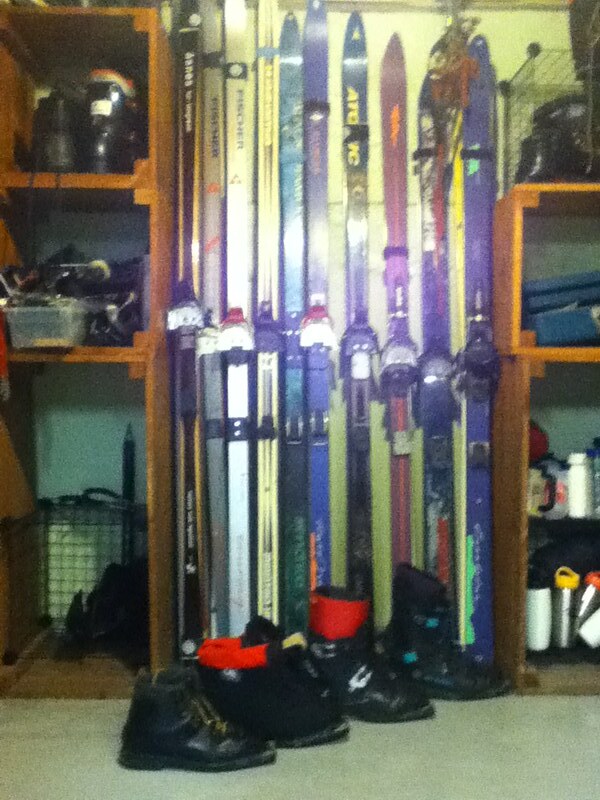MikeK
New member
Seems as though there are a few knowledgeable people on this forum when it comes to skiing so I'm going to ask a few miscellaneous questions that I haven't been able to find answers to. Most of this is what I've found to be the black area in BC Nordic skiing...
- In regards to light plastic boots such as a Scarpa T4 or Garmont Excursion, are these typically worn with or without thick socks? I wore plastic alpine boots with just liners. I don't have much issue with cold feet but I was wondering more in terms of giving up control through the boot. My feet also seem to be fairly intolerant of pressure points, etc... I have less issues with thick socks and liners.
- Does one need to tele turn with a boot like that? Or are they response to pressure edging? I've read many different accounts on skiing with boots like this and I'm a bit confused - I seem to see the term parallel skiing thrown out there from time to time. Is the telemark used to get more turning power?
I had one experience this year and I skied a pair 180cm compacts with some relatively stiff boots on groomed terrain. On a moderate hill I could turn them almost like a downhill ski using what I believe is called a parallel stem Christie turn. I wasn't truly parallel skiing them (carving). I realized after taking some advanced ski lessons in the past few years that I ski a combination of true parallel and stem Christie in alpine.
I guess this is where I get a little confused... and it's probably just lingo.
Given my current, soft, skinny skis, 3 pins and soft boots what I have learned is it is easier to pressure edge them in a wedge (stem) than it is to telemark turn them. I took a lesson and was able to make a few shaky, linked telemark turns on them... not something I'd ever rely on... I've tried it on a few hills here and there to practice but it isn't really working out. In a wedge they are pretty easy to turn. On a packed surface, I'm able to turn them back and forth fairly quickly and keep them relatively parallel (not as good as a shorter ski and stiffer boot).
I'd like to buy some plastic boots and sidecut skis. For bindings I'm thinking 3 pin cables. I'm kind of wondering what to expect. I've been guessing I'd be able to stem Christie a setup like that fairly easily unless the snow was deep and/or heavy, in which case I might need a telemark?
Not being a telemark skier I'm having a bit of an issue thinking I'll be able to really master the telemark turn, especially on light gear. I had considered AT gear to solve this problem but I really don't want to ski steep stuff and I like the feel of a 75mm for kicking and gliding... skiing flats with AT bindings looks more like walking to me.
- In regards to light plastic boots such as a Scarpa T4 or Garmont Excursion, are these typically worn with or without thick socks? I wore plastic alpine boots with just liners. I don't have much issue with cold feet but I was wondering more in terms of giving up control through the boot. My feet also seem to be fairly intolerant of pressure points, etc... I have less issues with thick socks and liners.
- Does one need to tele turn with a boot like that? Or are they response to pressure edging? I've read many different accounts on skiing with boots like this and I'm a bit confused - I seem to see the term parallel skiing thrown out there from time to time. Is the telemark used to get more turning power?
I had one experience this year and I skied a pair 180cm compacts with some relatively stiff boots on groomed terrain. On a moderate hill I could turn them almost like a downhill ski using what I believe is called a parallel stem Christie turn. I wasn't truly parallel skiing them (carving). I realized after taking some advanced ski lessons in the past few years that I ski a combination of true parallel and stem Christie in alpine.
I guess this is where I get a little confused... and it's probably just lingo.
Given my current, soft, skinny skis, 3 pins and soft boots what I have learned is it is easier to pressure edge them in a wedge (stem) than it is to telemark turn them. I took a lesson and was able to make a few shaky, linked telemark turns on them... not something I'd ever rely on... I've tried it on a few hills here and there to practice but it isn't really working out. In a wedge they are pretty easy to turn. On a packed surface, I'm able to turn them back and forth fairly quickly and keep them relatively parallel (not as good as a shorter ski and stiffer boot).
I'd like to buy some plastic boots and sidecut skis. For bindings I'm thinking 3 pin cables. I'm kind of wondering what to expect. I've been guessing I'd be able to stem Christie a setup like that fairly easily unless the snow was deep and/or heavy, in which case I might need a telemark?
Not being a telemark skier I'm having a bit of an issue thinking I'll be able to really master the telemark turn, especially on light gear. I had considered AT gear to solve this problem but I really don't want to ski steep stuff and I like the feel of a 75mm for kicking and gliding... skiing flats with AT bindings looks more like walking to me.

